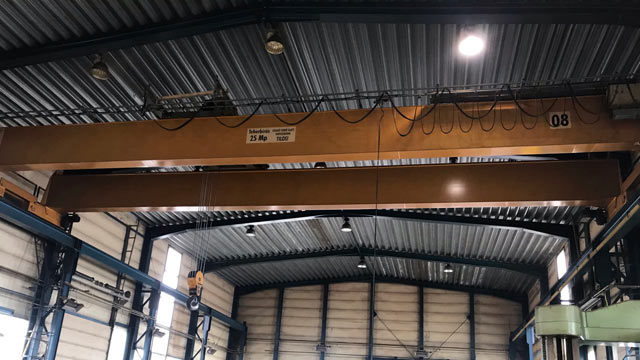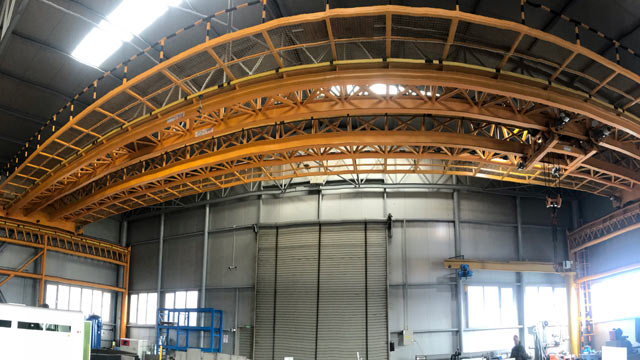Services

Our Services
- Installation and Maintenance of Cranes and Other Lifting Equipment
- Installation and Inspection of Conveyors and Conveyor Chains
- Electrical Installation
- Electric Shock Protection
- Lightning Protection
- Occupational Safety
Areas of Specialization

Detailed Work Specifications
I. High Voltage Electrical Technician
Work Specification: High voltage electrical technician is an employee assigned to the technical director of the company, institution or organization. Basic tasks of the high voltage electrical technician are the operation of the electricity network and the energy management system of the organization. Responsibilities include reactive power output management, sizing of the low voltage grids. Additional tasks are the management, construction and operation of the applied generating and controlling equipment. Knowledge and if necessary, reconstruction of high voltage installation, electric power system, electrical substations and electrical safety. Knowledge of the structure and activities of the plant management system. Familiarity with the applied electrical equipment, if need be, performing fault finding and troubleshooting. Familiarity with starpoint solutions for electricity networks. Knowledge of earthing system solutions and regulations of networks and substations. Knowledge of electric network power quality characteristics. Familiarity with tariffs and control solutions for tariff B. Knowledge of the structure and requirements of grid-connected small-scale power plants. Power electronic circuit hosting. Application of programmable logic controllers. Read more
Performing measurements related to energy management, selecting the appropriate measuring instruments, their networking, recording measurements, and preparing the required documents. Knowledge and performance of basic electrical work tasks.
Familiarity with end-user programs and applications. Knowledge and application of measurement principles and tools. Knowledge and application of electrical safety regulations. Collaboration with field staff through basic skills as a mechanical. Preparing necessary technical drawings on a computer and using them. Preparing and application of supporting documents, as well as process documentation.
Professional Qualifications:
- Fabrication of metal and plastic workpieces (cutting, drilling, milling, sawing, bending, grating, burnishing),
- making electrical and mechanical connections,
- making a basic electrical circuit diagram,
- understanding electrical wiring diagrams,
- selecting electrical measuring instruments,
- connecting electrical measuring instruments,
- performing electrical measurements,
- preparing a measurement report and drawing documentation,
- energizing equipment,
- de-energizing electrical equipment,
- making high voltage installation of smart buildings,
- carrying out electrical work in communal and residential buildings, testing electrical circuits,
- installing power distribution system in communal and residential buildings,
- installing / assembling control device objects,
- installing / assembling regulating apparatus,
- implementing, installing and setting up motor controls (motor protection, motor starter, reversing starter, speed controller circuits),
- performing measurements related to energy management,
- performing measurements related to the inspection of measuring transducers,
- condition assessment and testing of electrical networks and substations,
- performing measurements related to the inspection and review of electrical networks and equipment,
- operation and inspection of the protection and automation equipment of electrical networks and substations,
- transporting, installing, setting up and operating electric machinery,
- using small equipment and hand tools for basic technological operations,
- installing and operating computer, microprocessor, microcontroller and PLC controlled industrial processes,
- using electrical drawing software,
- complying with the regulations for work, accident, fire and environmental protection, as well as implementing professional, installation and repair technology regulations.
II. Lightning Protection System Auditor
Work Specification: Visual and instrumental inspection of the design to standards and documentation, as well as the proper technical condition of the external and internal lightning protection equipment of buildings and build-ups, also inspection result documentation. Read more
Professional Qualifications:
- reviewing the external and internal lightning protection equipment, that was installed on the basis of the legislation published before 2010 and the MSZ 274 standard series,
- checking and using the provided documentation at the system audit process (fire hazard classification, architectural drawings, documentation of lightning protection system design, qualification documents for the audit process of electrical protection and high voltage equipment, VVF reports),
- comparison of the existing documentation with the current state, checking the lightning protection classification of the buildings and build-ups, with special regard to the changes,
- comparison of the required level of lightning protection equipment (receiver, arrester, earth connection, size) with the planned one,
- checking the conformance of the lightning protection equipment to the requirements of the needed level,
- checking the fulfilment of other technical requirements (internal lightning protection, fixing and connecting of conductors, technical condition),
- testing the performance and coordination of lightning impulse protection,
- writing an inspection report,
- reviewing the external and internal lightning protection equipment, that was installed on the basis of the legislation published after 2010 and Hungarian technical standards,
- inspection and documentation of the parts of the lightning protection equipment to be covered during a new installation,
- checking and using the provided documentation at the system audit process (lightning density, fire hazard classification, architectural drawings, site plan of the building including the metallic cable networks, documentation of lightning protection system design and implementation, qualification documents for the audit process of electrical protection and high voltage equipment, VVF reports, shielding measurement reports, lightning protection system maintenance log),
- comparison of the existing documentation with the current state, in view of possible (external-internal) changes in the environmental construction and use parameters set out in the design plan,
- setting the Lightning Protection Level (LPL) and Lightning Protection System (LPS) of the buildings and build-ups,
- setting the Lightning Protection Measures System (LPMS) of the buildings and build-ups,
- reviewing the input parameters in quantitative risk assessment and the invariance of the internal zones, checking the conformance of the calculated risks to the legislative requirements,
- checking the required level of lightning protection equipment (receiver, arrester, earth connection, size, equipotential bonding) based on the above,
- checking the conformance of the existing Lightning Protection System (LPS) to the values specified for the required lightning protection level (material, geometry),
- checking the conformance of the existing Lightning Protection Measures System (LPMS) to requirements for the defined lightning protection level (equipotential bonding, protection devices, coordination, shielding),
- checking the technical condition of the entire lightning protection system (LPS and LPMS) (stability, strength, surface protection, joints, corrosion rate, shield connection, continuity of shell-shielding, internal lightning protection, conductor fixings and connections, ready for operation of protection devices),
- checking the conformance of the earthing system by earth resistance measurements,
- checking the step and touch voltage protection,
- measurement of the soil specific resistivity, if necessary,
- in the absence of input documentation of lightning protection system established in accordance with the norm, declining the assignment, otherwise,
- preparing certification.
III. Electrical Safety Auditor
Work Specification: Visual and instrumental inspection of the design to standards, also the proper technical condition of the hazard control (touch protection) system of high voltage electrical equipment, as well as inspection result documentation. Read more
Professional Qualifications:
- processing a mechanical inspection and electrical safety audit,
- setting hazard control (touch protection) method,
- checking EPH design,
- testing the separation of the protective neutral and the neutral conductors,
- checking the design of the TN system (resetting),
- measuring loop impedance,
- inspection and evaluation of triggers,
- revealing the cause of a higher than allowable loop impedance,
- checking the design of the TT system (protective earthing),
- pursuing earth and earth loop resistance measurements,
- checking the touch protection of the IT system (insulated system),
- performing earth resistance and short circuit current measurements,
- checking methods of hazard control (touch protection) without a protective conductor,v
- testing insulation resistance,
- detection and classification of errors,
- preparing a measurement report,
- preparing electrical safety certification.
Periodical Inspection Auditor of High Voltage Electrical Equipment: Due to 40/2017. (XII. 4.) NGM decree on the connection and user equipment and on the electrical equipment and protection systems operating in potentially explosive atmospheres, mandatory retraining required in every 5 years:
- reading, interpreting and preparing of technical documentation,
- knowledge of electrical materials, fittings, equipment,
- using of special electrical instruments,
- performing electrical measurements,
- making a circuit diagram.
IV. Lifting Equipment Administrator
Work Specification: Competence – applicable to all sectors of the national economy – to carry out the operating tasks in the field of operating lifting equipment, assigned by the operator employer. Read more
Skilled in accident prevention at work, as well as reducing of the cost-increasing effect of accidents at work due to unexpected breakdowns of lifting equipment or quasi-accidents without personal injury and production losses.
Ensures that the legal requirements for safe operation of lifting equipment, national standards and lifting equipment documentation, also the internal regulation of operations are fully implemented.
Professional Qualifications:
- collaboration with workplace managers, professionals, employees, external experts, maintenance workers, etc. to minimize the risks associated with lifting operations;
- assistance at the implementation of the occupational safety tasks of the operator employer;
- organizing the installation of lifting equipment, ensuring the commission, proper use, safe condition, periodic inspection, as well as professional and regular maintenance of the load restraint systems;
- registering and retaining all the documents of the lifting equipment and load restraint systems. In particular:
- documentation and issue of the periodic inspections,
- required original documents, certificates, logs and maintenance declarations of the maintenance work and changes of the main parts, ropes, hooks and chains;
- keeping the operating documentation and register of the lifting equipment and load restraint systems up to date, and retaining them until the equipment are scrapped;
- providing the availability of the Instruction Manual made according to the Machinery Directive [16/2008. (VIII. 30.) NFGM Decree] to the operator until the lifting equipment are scrapped, also providing the availability of Equipment Safety Manual to the lifting equipment operator;
- ensuring proper use of the lifting equipment and the load restraint systems, also the proper, specified storage of the equipment when out of use;
- scheduling and checking the periodic inspections of the lifting equipment and the load restraint systems, as well as checking the results of the periodic inspections and organizing the necessary repairs, also suspending the operation of the lifting equipment if necessary. Suspending the operation of the lifting equipment for the duration of the inspections and repairs;
- taking action in regards to ensure that the operator of the lifting equipment is qualified in accordance with the relevant legislation, and that the lifting coordinator and the rigging coordinator acquire the necessary knowledge for their work;
- recording operator experience and safety incidents related to the lifting equipment in the lifting equipment log and organizing records for retention;
- carrying out the periodic inspections required by the regulation, making inspection reports and checking the reports prepared by others;
- making proposal to the operator manager to eliminate the deficiencies revealed in the periodic inspection reports;
- preparing proposals and draft contracts regarding to the tasks related to the lifting equipment within his/her competence;
- communicating the occupational health management values to the employers and employees.
